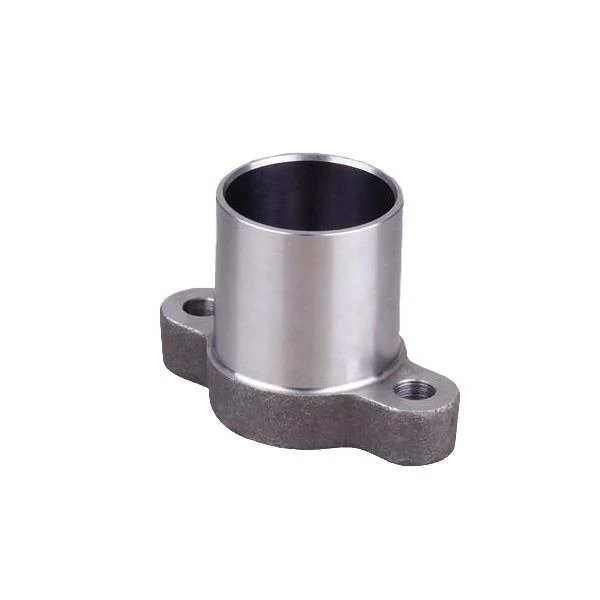Air Set Sand Casting Techniques for Efficient Metal Forming and Molding Processes
Air Set Sand Casting An Efficient Approach to Metal Casting
In the world of manufacturing and metalworking, casting is a fundamental process that allows for the production of intricate and complex shapes, which are often challenging to achieve through other methods. Among the various casting techniques, air set sand casting has gained popularity due to its efficiency, versatility, and cost-effectiveness. This article delves into the intricacies of air set sand casting, its advantages, applications, and the process itself.
What is Air Set Sand Casting?
Air set sand casting is a method wherein a mixture of sand and a binding agent is used to create molds that can withstand the high temperatures of molten metal. Unlike traditional sand casting, where molds are made with moisture, air set molds are cured at room temperature. The binding agents used, typically phenolic resins, enable the sand grains to adhere to each other without the need for water. This characteristic offers numerous benefits, one of which is the reduced risk of mold deformation during the metal pouring process.
The Advantages of Air Set Sand Casting
1. Precision and Detail Air set sand casting allows for the production of highly detailed and intricate designs. The use of phenolic resin gives the molds a finer surface finish and greater dimensional accuracy, making it an excellent choice for applications where precision is paramount.
2. Reduced Defects Traditional sand casting can result in various defects, such as gas pockets and sand inclusion. Air set sand casting minimizes these issues significantly due to its dry and sturdy molds, leading to a better-quality final product.
3. Versatility This casting method is suitable for a wide range of materials, including various alloys of iron, aluminum, and bronze. This versatility allows manufacturers to cater to diverse industry needs with a single casting process.
4. Cost-Effectiveness While the initial setup and material costs may be higher than traditional sand casting, the overall efficiency, reduced waste, and lower defect rates make air set sand casting a cost-effective solution in the long run. The longevity of the molds also contributes to reduced operational costs.
5. Environmental Benefits The air set sand casting process generates less waste and uses fewer harmful materials compared to other casting methods. The use of resin-bonded sand reduces the amount of sand that is lost through reclamation, making the process more sustainable.
air set sand casting

The Air Set Sand Casting Process
The air set sand casting process involves several key steps
1. Pattern Creation Initially, a pattern is created, usually made from wood or metal, which represents the final product. This pattern will be used to form the mold.
2. Mold Preparation Sand is mixed with a binding agent, typically a phenolic resin, and poured around the pattern. The mixture is allowed to set, hardening into a mold that accurately reflects the pattern's shape.
3. Mold Assembly Once the mold is cured, it is carefully removed from the pattern and assembled, usually consisting of two halves. The two halves are then sealed together, forming a cavity for the molten metal.
4. Metal Pouring Molten metal is poured into the prepared mold through a sprue, filling the cavity created by the pattern.
5. Cooling and Finishing After the metal has cooled and solidified, the mold is removed, and the cast component is extracted. Any additional finishing processes, such as sanding or machining, are completed to achieve the desired surface finish and dimensions.
Conclusion
Air set sand casting is an innovative and efficient casting method that offers a multitude of benefits for manufacturers and designers alike. Its ability to produce high-precision, low-defect parts with reduced environmental impact makes it a preferred choice across various industries, including automotive, aerospace, and general manufacturing. As technology continues to advance, the air set sand casting process is likely to evolve even further, solidifying its role in the future of metal casting.
-
OEM Sand Cast Pump Valve Fittings - Baoding Hairun Machinery And Equipment Trading Co., Ltd.NewsAug.01,2025
-
Custom OEM Impellers | High Efficiency & PrecisionNewsAug.01,2025
-
OEM Sand Cast Pump Valve Fittings - Baoding Hairun Machinery | Customization, Quality AssuranceNewsAug.01,2025
-
OEM Sand Cast Pump Valve Fittings - Baoding Hairun Machinery And Equipment Trading Co., Ltd.NewsAug.01,2025
-
OEM Sand Cast Pump Valve Fittings - Baoding Hairun Machinery And Equipment Trading Co., Ltd.NewsJul.31,2025
-
OEM Sand Cast Pump Valve Fittings - Baoding Hairun | Precision Engineering, CustomizableNewsJul.30,2025















